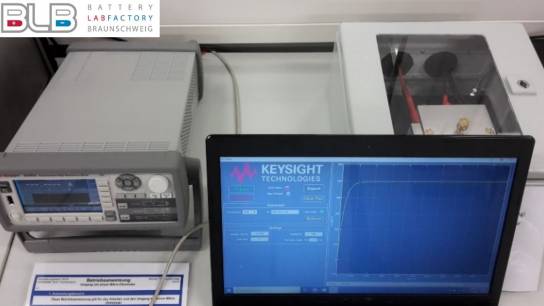Key Innovation in NanoBat: HiPot test system for quality test classification
HiPot test system chosen by EC's Innovation Radar
We are happy that “HiPot test system for quality test classification” was chosen by the European Commission’s Innovation Radar as a remarkable innovation developed in the NanoBat project.
To find out more about this, follow this link.
The innovation is closely connected to the journal article "High-Potential Test for Quality Control of Separator Defects in Battery Cell Production" published in 2021 by a group of NanoBat partners.
Abstract: Lithium-ion batteries are a key technology for electromobility; thus, quality control in cell production is a central aspect for the success of electric vehicles. The detection of defects and poor insulation behavior of the separator is essential for high-quality batteries. Optical quality control methods in cell production are unable to detect small but still relevant defects in the separator layer, e.g., pinholes or particle contaminations. This gap can be closed by executing high-potential testing to analyze the insulation performance of the electrically insulating separator layer in a pouch cell. Here, we present an experimental study to identify different separator defects on dry cell stacks on the basis of electric voltage stress and mechanical pressure. In addition, finite element modeling (FEM) is used to generate physical insights into the partial discharge by examining the defect structures and the corresponding electric fields, including topographical electrode roughness, impurity particles, and voids in the separator. The test results show that hard discharges are associated with significant separator defects. Based on the study, a voltage of 350 to 450 V and a pressure of 0.3 to 0.6 N/mm2 are identified as optimum ranges for the test methodology, resulting in failure detection rates of up to 85%.
